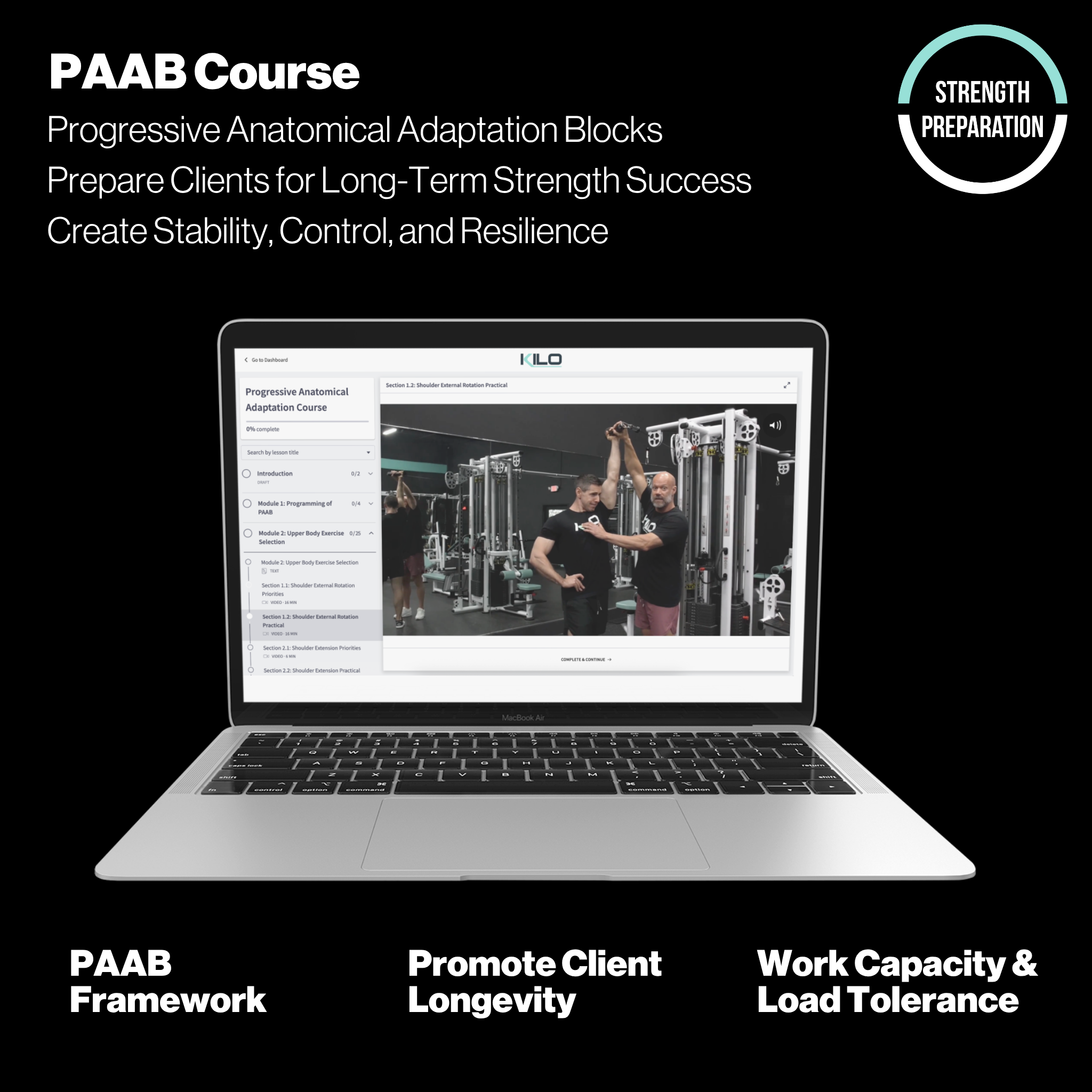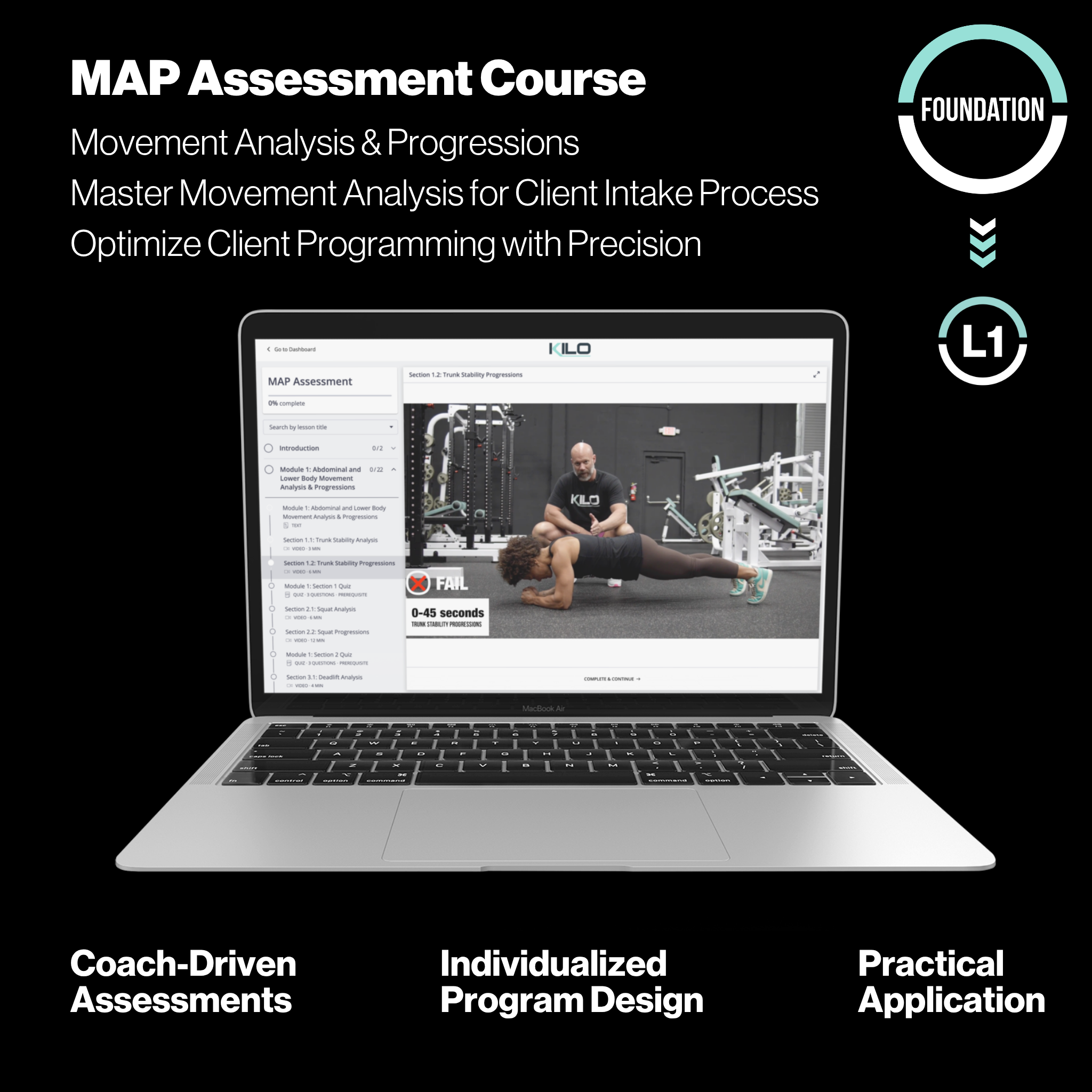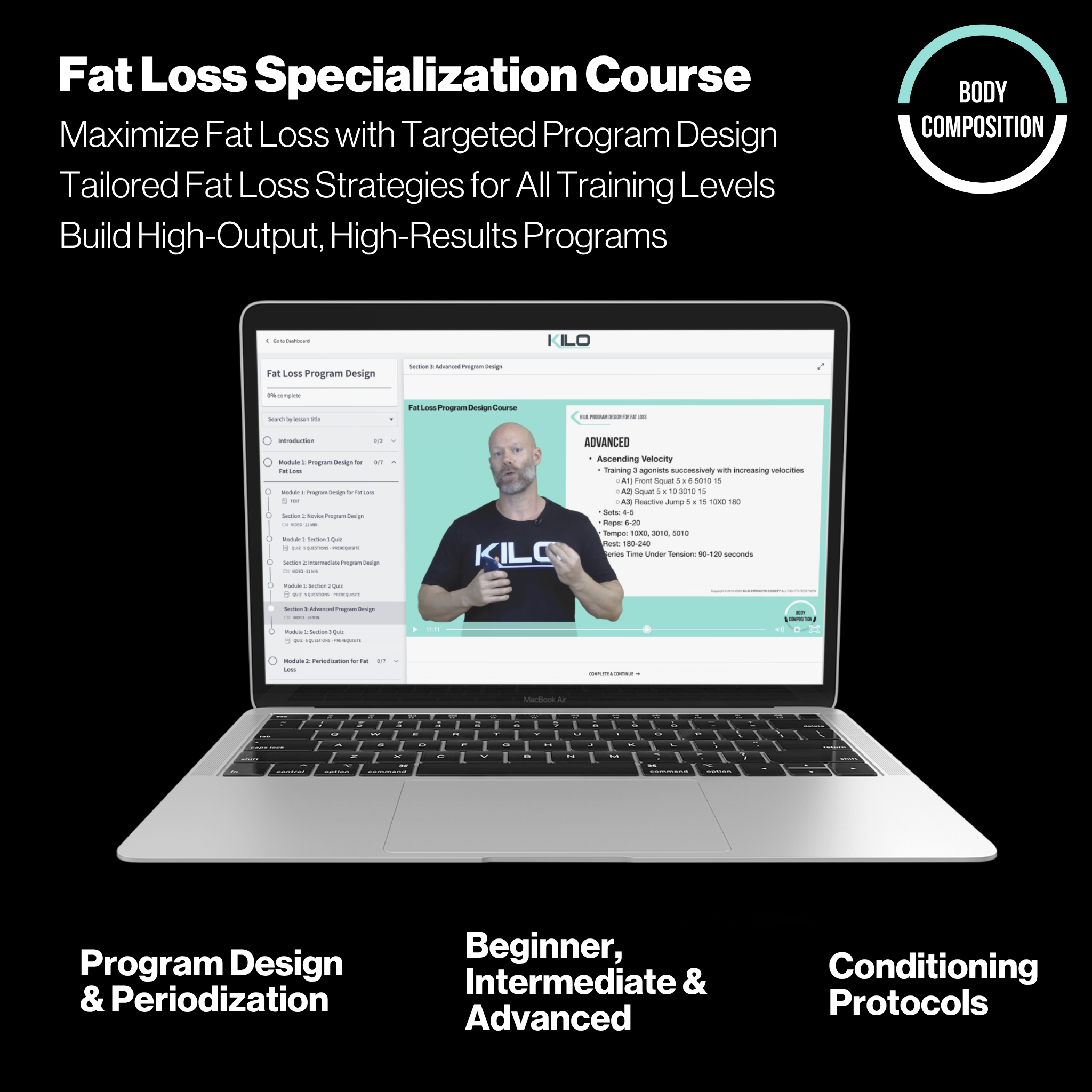At KILO, we believe in systems that are structured, intentional, and principle-driven. Whether it's building upper body strength or training the lower body to produce more force, the blueprint matters. But behind every smart plan is a deep layer of details.
One of the most essential concepts that guides our programming is the Fitness-Fatigue Model, also known as the Two-Factor Theory of Training.
This model helps explain why you don't always feel stronger the day after a hard workout, how timing impacts performance, and why the "dose" of training must be carefully balanced with recovery. It's not just theory, it's the logic behind your loading weeks, deloads, and strategic planning. Let's walk through it.
What Is the Fitness-Fatigue Model?
The Fitness-Fatigue Paradigm explains how your body responds to training as a balance between two opposing forces:
-
Fitness: the positive adaptations (like strength, endurance, or skill) that accumulate over time from effective training.
-
Fatigue: the temporary drop in performance due to the stress imposed by training.
After a training session, your performance potential, or "preparedness", is a combination of both these effects.
As explained in Science and Practice of Strength Training, every workout results in both:
- A gain in fitness prompted by the training.
- An increase in fatigue that temporarily masks the fitness gained.
In essence, you're always improving and exhausting yourself at the same time. The trick is knowing how long each effect lasts and how to structure training so that fatigue dissipates and fitness remains.
Fitness vs. Fatigue: Uneven Timelines
One of the most important principles of the Fitness-Fatigue model is that fitness and fatigue don't operate on the same timeline.
Fatigue has a shorter half-life than fitness. For estimation, the model assumes that fatigue lasts about three times less than fitness.
To put that into context:
If fatigue from a workout lasts ~24 hours, the positive adaptations from that session may last up to 72 hours or more.
This time discrepancy is powerful. It means that if you allow enough recovery, the fatigue drops away and your performance can peak, despite the work being done days earlier.
This is the physiological principle that underpins tapering before competition or peaking before a strength test. The goal is to reduce fatigue just enough to let your true level of fitness shine through.
A Simple Equation for a Complex System
Zatsiorsky developed a formula for "Preparedness" (i.e., current performance potential):
Preparedness = P₀ + P₁e^(-kt) - P₂e^(-k₂t)
Where:
-
P₀ is the baseline preparedness,
-
P₁ is the magnitude of fitness gain,
-
P₂ is the magnitude of fatigue,
-
k and k₂ are decay rates,
-
t is time.
This math is abstract, but the meaning is practical:
Fitness grows and fades more slowly; fatigue spikes higher but drops off faster.
You don't need to memorize the equation to benefit from the principle. You need to train in a way that maximizes the fitness signal while managing the fatigue.
That's what smart programming does.
Two-Factor vs. One-Factor Models
We will illustrate the difference between one-factor and two-factor models using two coaches:
-
Coach A follows a one-factor (supercompensation) model: train, rest, recover, repeat. This model assumes one direct line from stress to improvement.
-
Coach B follows the two-factor model: accounting for both positive (fitness) and negative (fatigue) effects and manipulating rest based on when fatigue dissipates but fitness lingers.
At KILO, we are Coach B.
That's why we don't just write programs, we periodize. We account for both readiness and recovery. Our mesocycle loading progressions, session loading concepts, and rep schemes are all planned with this dynamic in mind.
Training Effects: A Spectrum
The Fitness-Fatigue model also helps classify training effects based on timing:
-
Acute Effects: what happens during the workout (e.g., muscle pump, elevated heart rate).
-
Immediate Effects: what occurs shortly after the session (e.g., transient fatigue, soreness).
-
Cumulative Effects: gains that emerge from repeated sessions.
-
Delayed Effects: adaptations seen after a training cycle (e.g., increased maximal strength).
-
Partial Effects: changes from a specific movement (e.g., deadlift improving the posterior chain).
-
Residual Effects: how long the adaptation lasts after training stops.
For coaches, understanding this cascade matters. But even as an athlete, this helps frame your expectations. A single workout might leave you tired, but it's the cumulative, delayed, and residual effects that deliver results.
Applying the Fitness-Fatigue Model in KILO Training
Now let's tie this into how we apply the theory in practice, using examples from our upper and lower body training programs.
Example 1: Upper Body Strength
Let's say we're in Week 2 of an Accumulation Phase. You're hitting higher reps, moderate-load overhead presses, flat dumbbell presses, and remedial work like triceps extensions.
-
Fitness Gain: Shoulders, Pectorals, and Triceps hypertrophy, increasing long-term pressing strength potential.
-
Fatigue Spike: Accumulates from higher volume, especially if you're close to failure on assistance and remedial lifts.
By the time you hit Week 3, fatigue is high.
Preparedness (your true strength expression) might dip. But we don't panic, this is planned.
Week 4 transitions to an intensification phase.
Volume drops, fatigue dissipates, and BOOM, fitness is still there. Pressing performance rebounds or even exceeds your previous best.
This isn't accidental. It's textbook Fitness-Fatigue.
Example 2: Lower Body Strength
Let's say you're deep into an Intensification Phase. You're running multiple sets of 4 reps on back squats with heavier loading.
-
Fitness Gain: High-threshold motor unit recruitment improves.
-
Fatigue Spike: Neurological fatigue, joint stress, CNS demand.
Fatigue masks your true strength, but only for a short period. That's why Week 2 of this mesocycle might feel like a grind, even if progress is occurring under the surface.
When we plan the Week 3 deload, we're allowing fatigue to drop. Residual effects from heavy squatting persist, so preparedness rebounds.
You test your squat the next week and crush it. That's the model at work.
Practical Takeaways for Coaches and Athletes
Here's how to apply the Fitness-Fatigue Paradigm in real training:
1. Expect Delayed Results
You don't always feel stronger immediately after hard work. That doesn't mean it's not working; it means fatigue is doing its job. Be patient and plan your progressions accordingly.
2. Use Strategic Rest
Rest isn't just the absence of training; it's a tool to reduce fatigue while maintaining fitness: plan deloads and taper weeks with the model in mind.
3. Manipulate Load and Volume
High volume? Expect more fatigue. High intensity? Expect more neural drain. Match your recovery strategies to the type of stress applied.
4. Don't Chase Readiness Every Day
Chasing performance in every session can backfire. Some sessions are for building (even if you feel tired). Others are for expressing (when fatigue has dropped off). Know the difference.
5. Track Fatigue Symptoms
If you're sleeping poorly, feeling drained, or regressing in performance despite progressive loading, it's likely not due to undertraining. It's masked fitness due to excessive fatigue. Adjust accordingly.
Summary
The Fitness-Fatigue Paradigm gives us a powerful framework for understanding strength development. It's not about training harder every day, it's about training smarter across weeks, months, and cycles.
At KILO, every set, rep, and rest interval is designed to tip the scales toward lasting fitness while managing fatigue. We don't guess. We engineer results.
And as your preparedness climbs, you'll not only see your strength numbers rise, you'll feel the difference. Because when fitness outlasts fatigue, performance thrives.
Ready to train with intent?
Let us help you align your training with physiology. Explore our complete system inside the KILO Program Design Course.








Share:
12 Essential Books That Shaped Our Strength Training Philosophy
The Missing Link in Strength: Why Grip Training Deserves a Front Row Seat
1 comment
Great stuff guys! Thanks for sharing your information and insights on the fitness and fatigue paradigm!